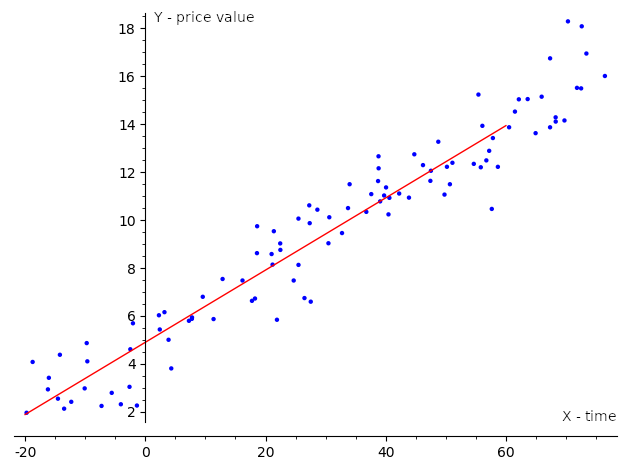Consider an example of the real-world supervised ML algorithm called linear regression. In general, linear regression is an approach for modeling a target value (dependent value) based on an explanatory value (independent value). This method is used for forecasting and finding relationships between values. We can classify regression methods by the number of inputs (independent variables) and the type of relationship between the inputs and outputs (dependent variables).
Simple linear regression is the case where the number of independent variables is 1, and there is a linear relationship between the independent (x) and dependent (y) variable.
Linear regression is widely used in different areas, such as scientific research, where it can describe relationships between variables, as well as in applications within industry, such as a revenue prediction. For example, it can estimate a trend line that represents the long-term movement in the stock price time-series data. It tells whether the interest value of in a specific dataset has increased or decreased over the given period, as illustrated in the following screenshot:

If we have one input variable (independent variable) and one output variable (dependent variable) the regression is called simple, and we use the term simple linear regression for it. With multiple independent variables, we call this multiple linear regression or multivariable linear regression. Usually, when we are dealing with real-world problems, we have a lot of independent variables, so we model such problems with multiple regression models. Multiple regression models have a universal definition that covers other types, so even simple linear regression is often defined using the multiple regression definition.
